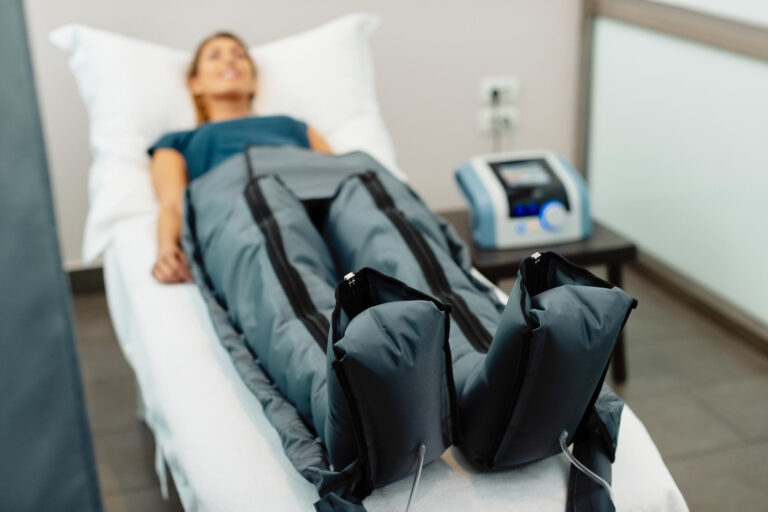Lymphatic drainage is one of the elements of physiotherapeutic activities (treatments) - it is a type of massage. Lymphatic drainage can be performed in two ways, which is why manual lymphatic drainage and mechanical lymphatic drainage are distinguished. Manual lymphatic drainage involves performing specific pressures with your hands. However, mechanical lymphatic drainage, or pressotherapy, is performed by an appropriate device. The procedure is easy and automated.
What is lymphatic drainage?
Optimal lymph flow is the key to a healthy body, and lymphatic drainage is the secret to achieving this goal. This gentle yet effective treatment focuses on improving the functioning of the lymphatic system, stimulating lymph circulation. Its main task is not only to prevent potential diseases resulting from lymph stasis, but also to eliminate inflammatory, congestive and lymphatic edema.
Lymphatic drainage plays a key role in the recovery process from various diseases, such as cancer and infections, accelerating the return to full strength. Moreover, it is an invaluable support during... fighting cellulite and during the weight loss process. This innovative treatment not only improves lymph circulation, but also unclogs lymph nodes, cleanses the body of toxins, increases the production of lymphocytes and accelerates the regeneration process.
Lymphatic drainage is not only therapy, it is a path to better well-being and more beautiful skin. Its effects are visible almost immediately, making you feel refreshed, light and full of energy. Invest in your health and beauty now - lymphatic drainage is waiting to reveal all its benefits to you
Lymphatic drainage – indications
Lymphatic drainage is a treatment that can be used by many people who have problems with swelling of various origins or after illnesses. The basic indications for performing a massage include:
- Fatty edema and static lymphoedema
- Post-operative swelling and post-traumatic circumcision, e.g. after mastectomy or thyroid surgery
- Swelling and lymphatic stasis (primary and secondary)
- Metabolic and oncological diseases (some types)
- Diabetes
- Degenerative joint diseases
- Supporting the cellulite reduction and weight loss process
- Support the functioning of the immune system
- Improving post-exercise regeneration (mainly in athletes)
- Cleansing the body of toxins
Lymphatic drainage – contraindications
Lymphatic drainage is a safe procedure and its contraindications are preventive. Contraindications to performing lymphatic drainage include in particular:
- Swelling and exudation in the course of acute inflammation, infectious diseases and cancer\
- Acute inflammation of the subcutaneous tissue and inflammation of the veins
- Thrombosis
- Advanced atherosclerosis
- Acute course of viral and bacterial diseases
- High fever
- Certain skin diseases, e.g. acute fungal infection
- Open wounds on the skin
- Epilepsy
- Circulatory failure and decompensated heart failure
State-of-the-art Lymphatic Drainage Equipment
DL1200H devices are state-of-the-art devices enabling the use of therapy, primarily used to treat lymphedema of the limbs and to improve the blood supply to their tissues.
The DL1200H device works on the principle of intermittent pneumatic compression (pressotherapy), i.e. it uses a moving pressure wave enabling compressive lymphatic drainage. Massage of a given area is performed by pressing the sleeves filled with air, to which a stream of compressed air is supplied from the basic unit (compressor) via a system of flexible tubes. Filling individual chambers of special sleeves at pre-programmed intervals creates slowly moving pressure. Gentle, rhythmic pressure waves are created. At the end of the cycle, the air is automatically pumped out. Pneumatic pressure massage is positively perceived by patients as a very pleasant and effective method of treatment. There is a feeling of relief in the areas covered by the massage.







